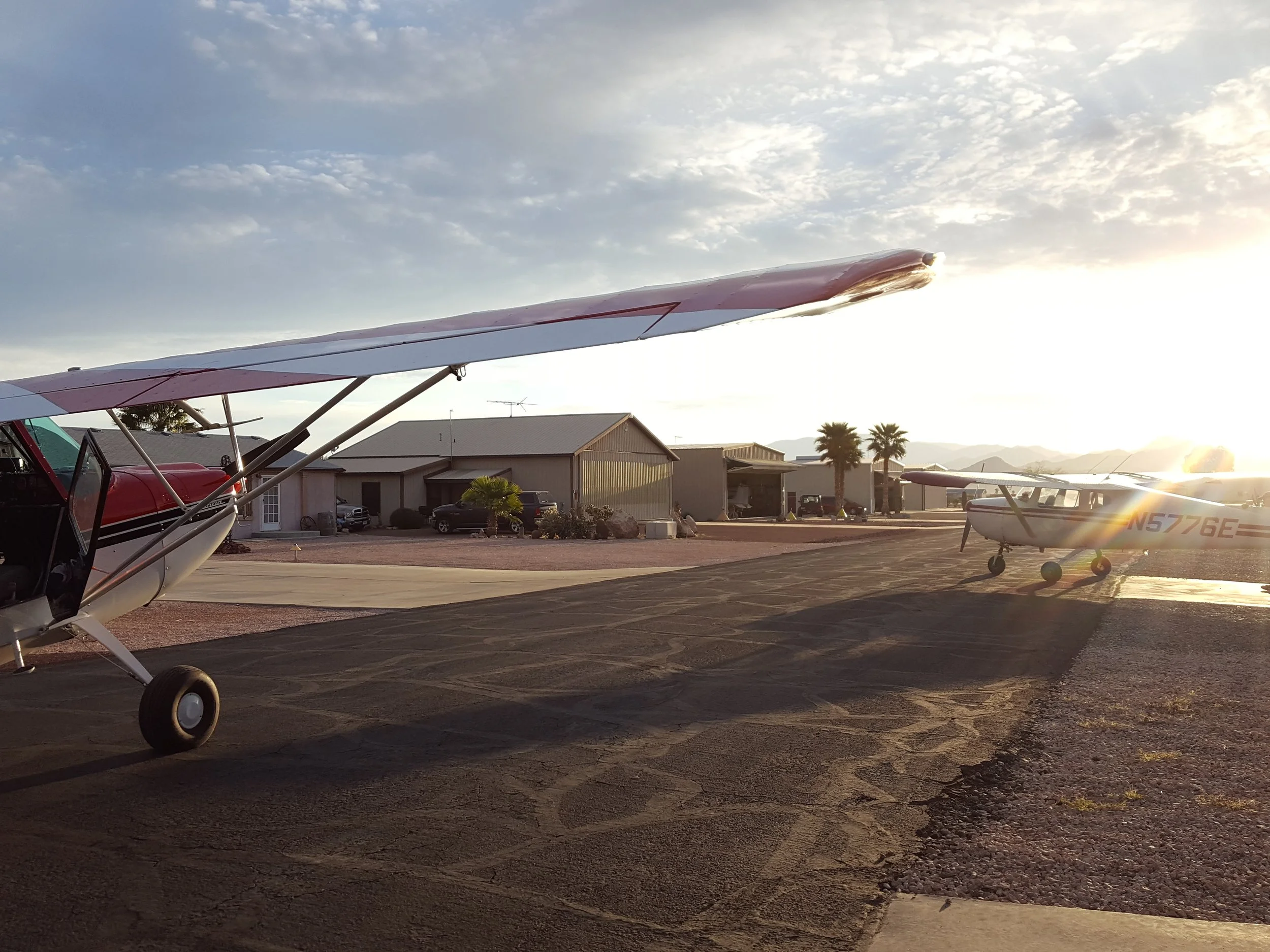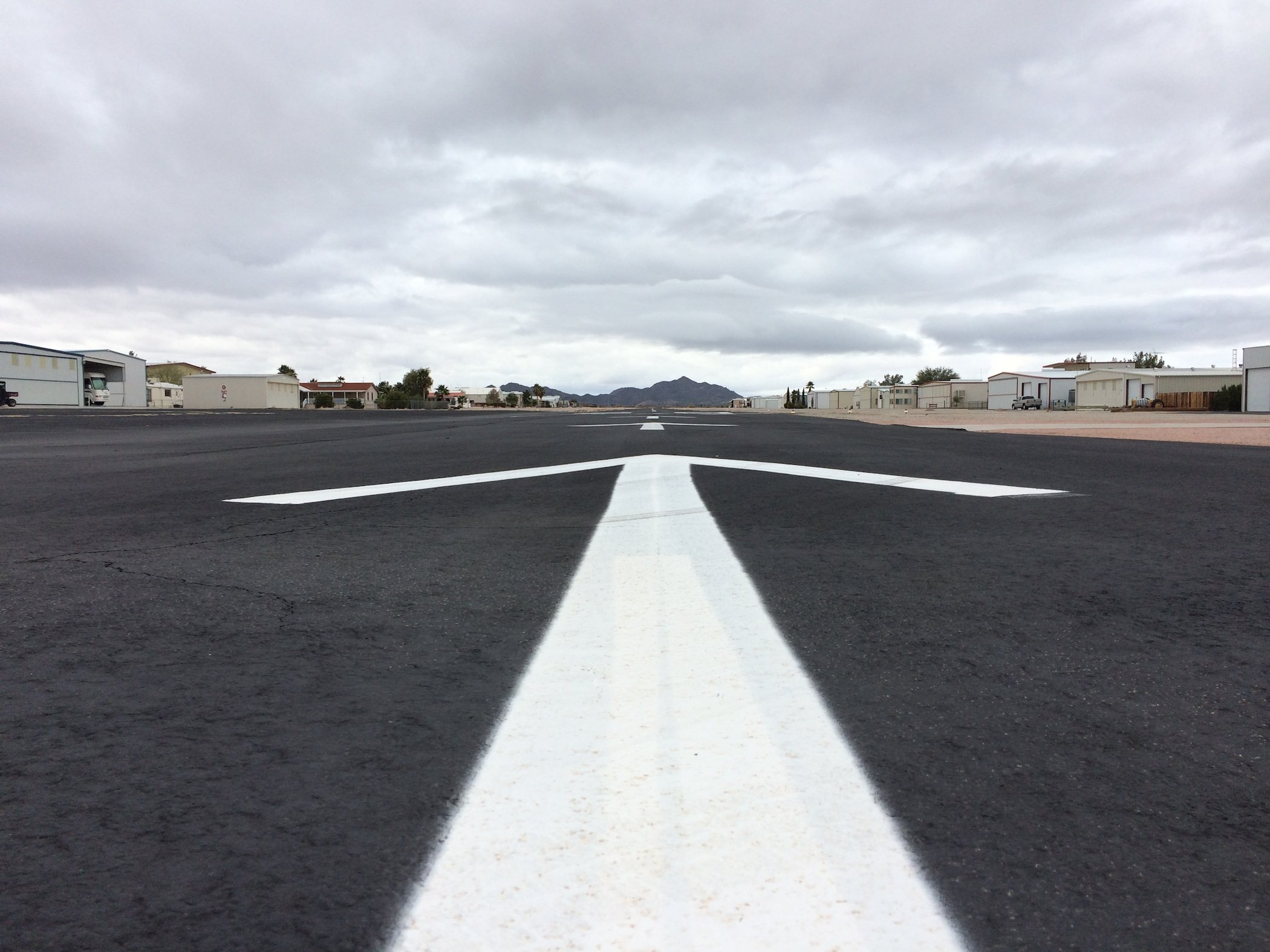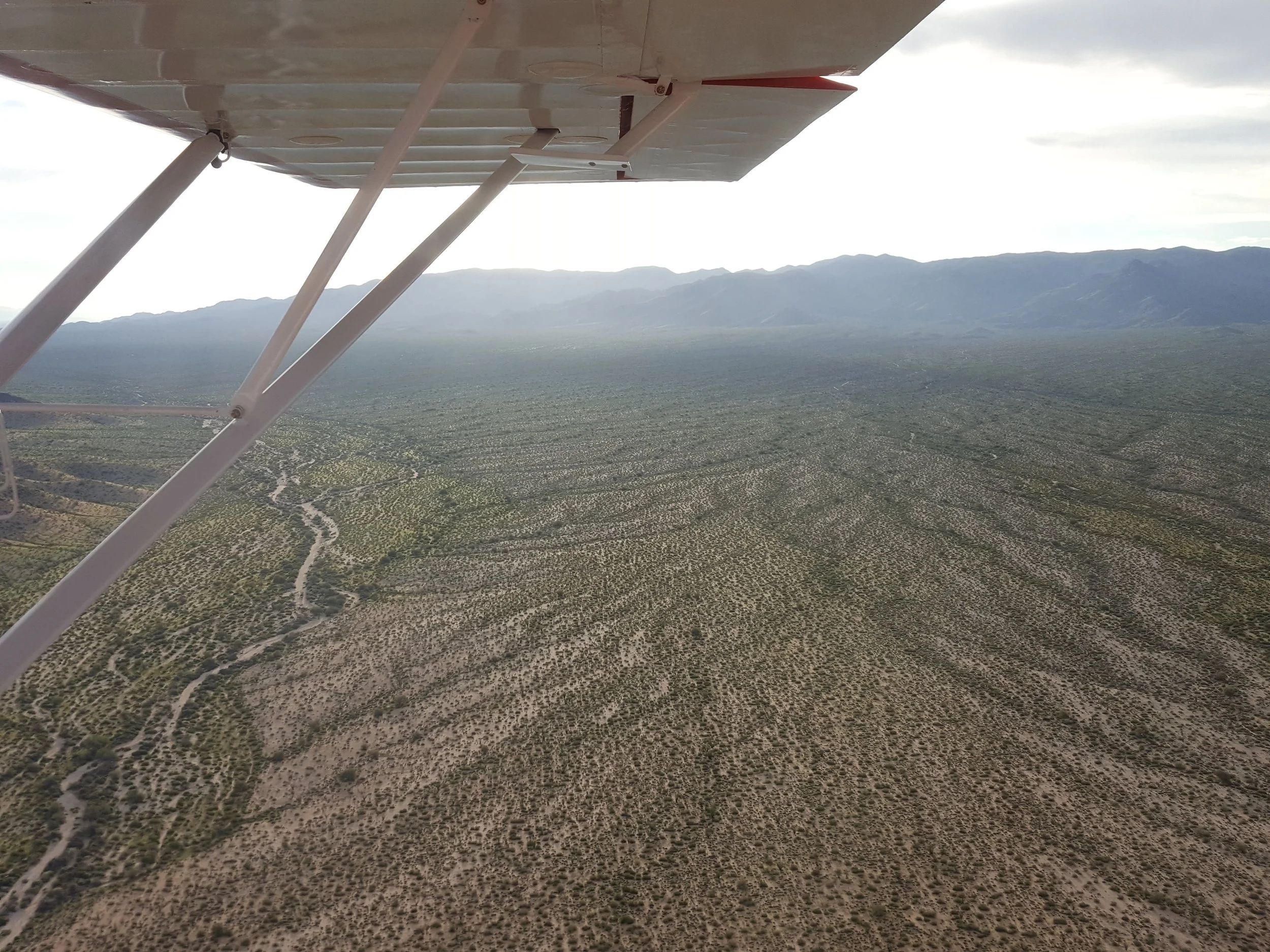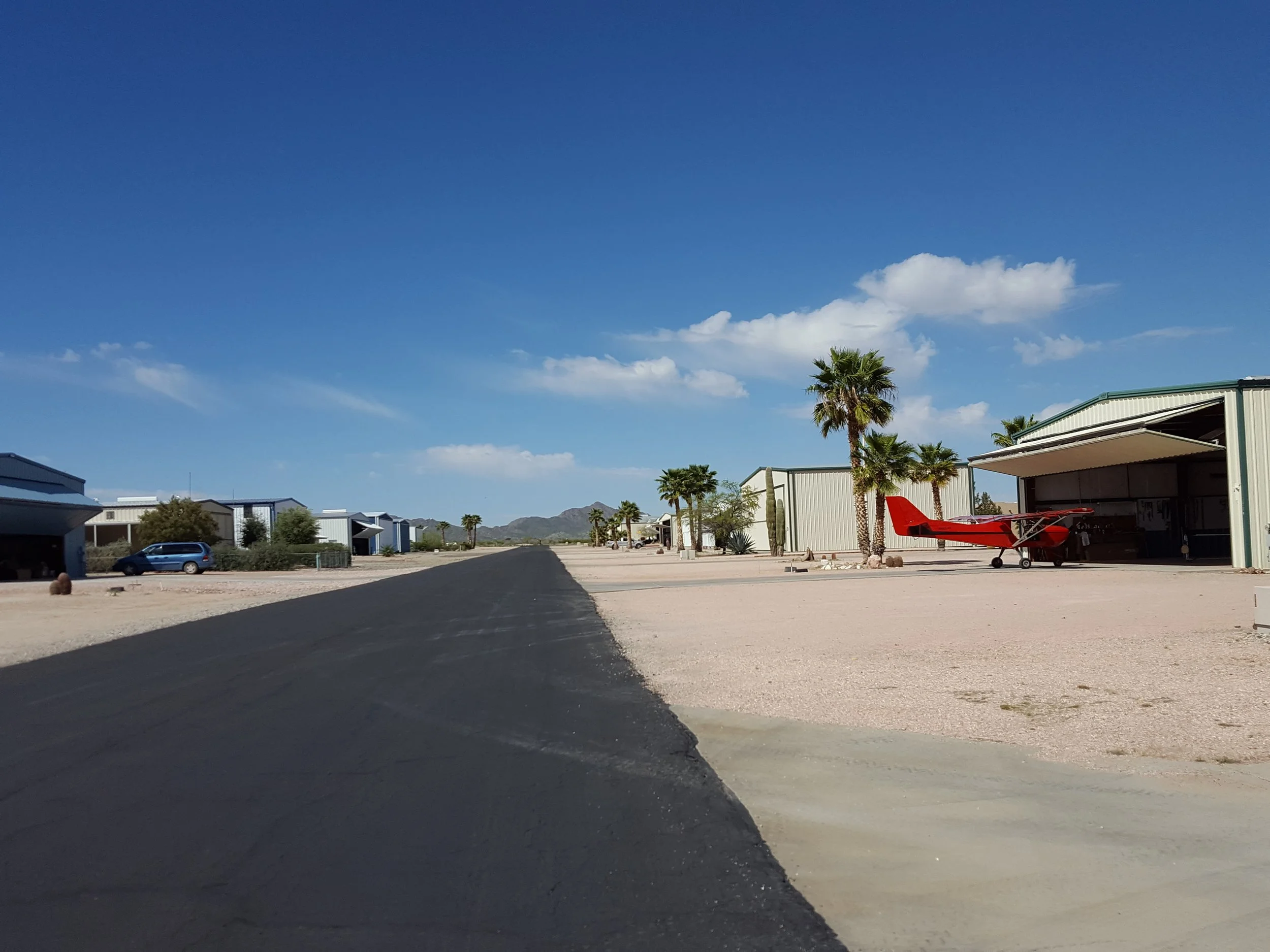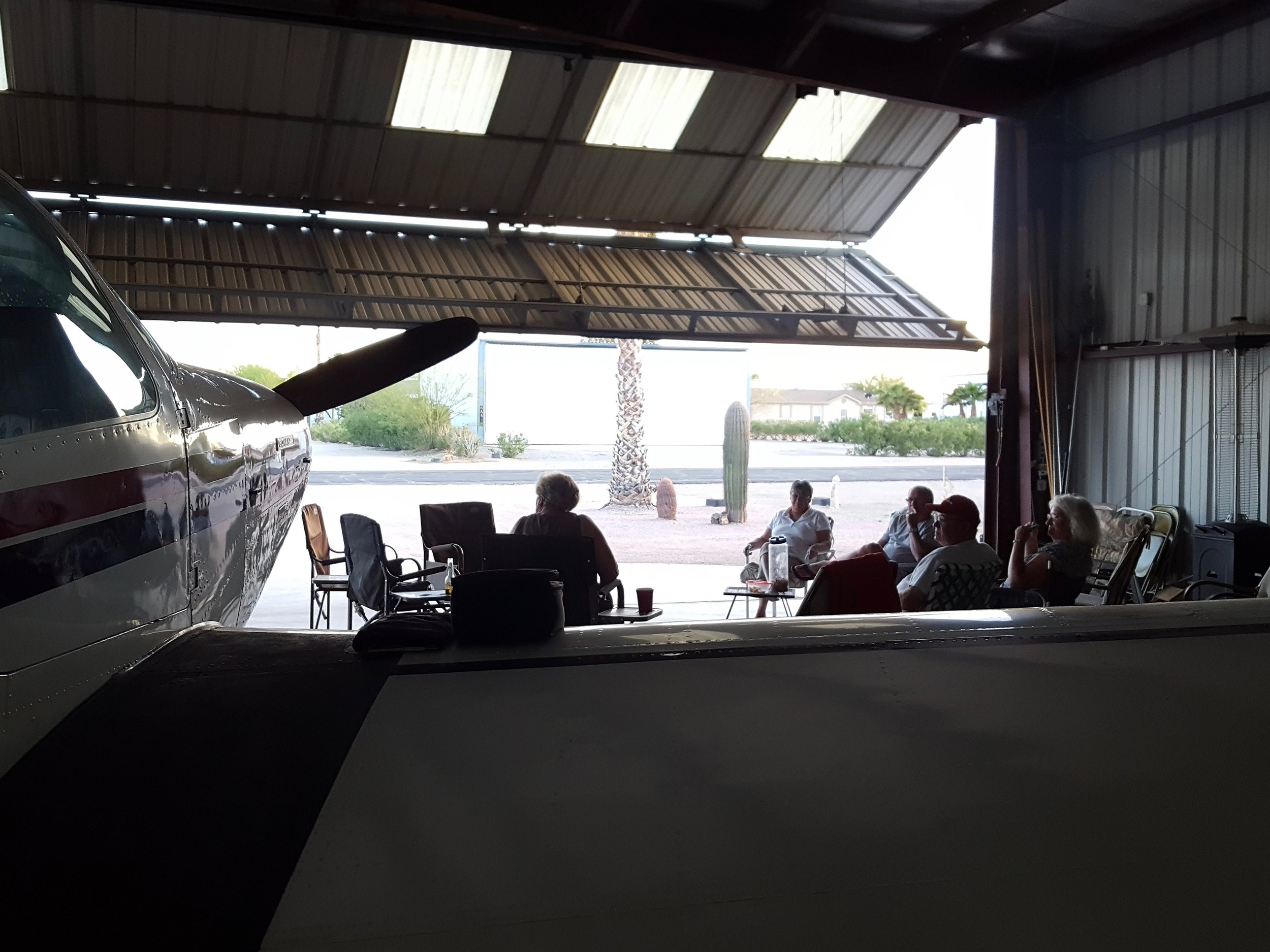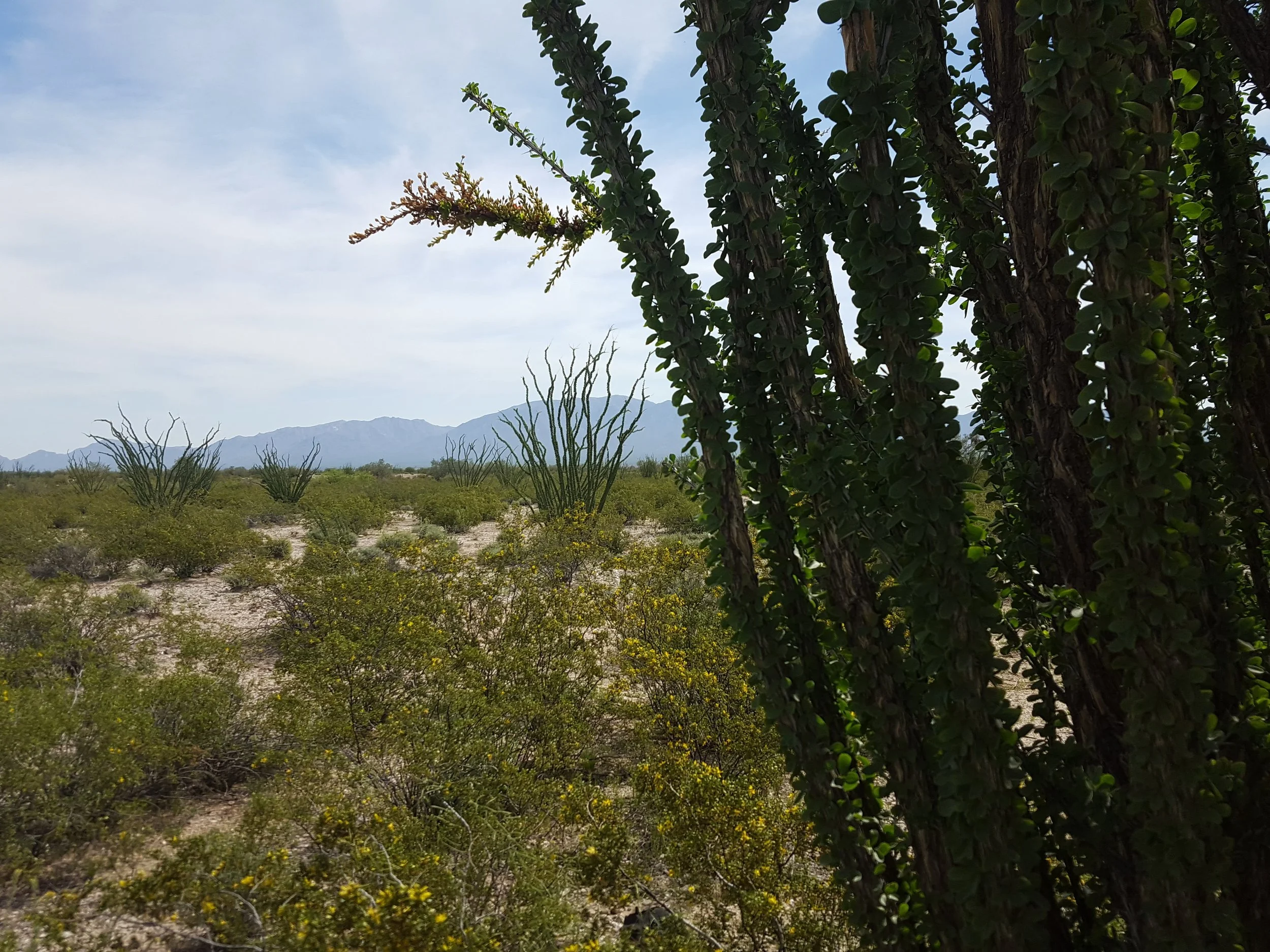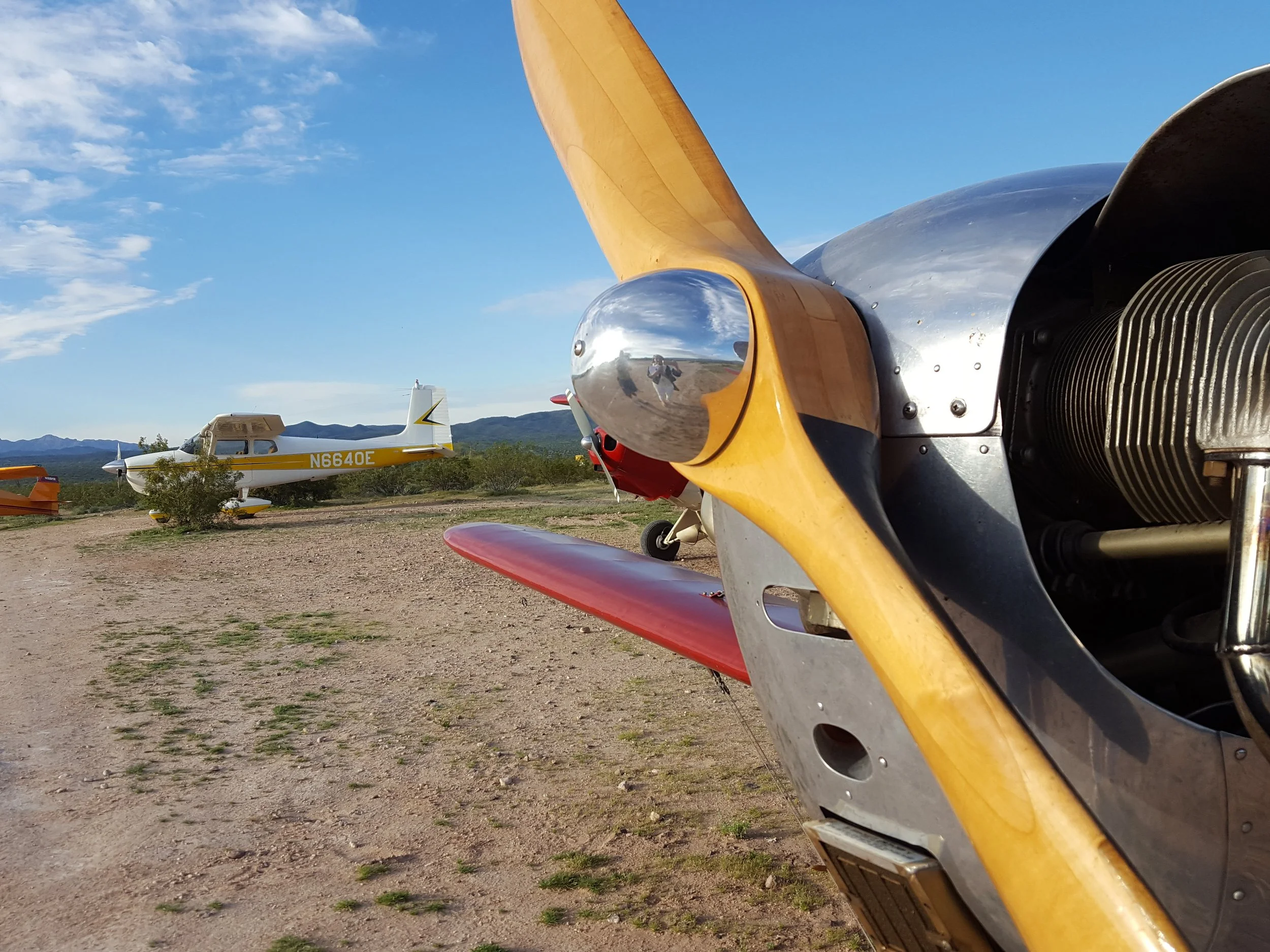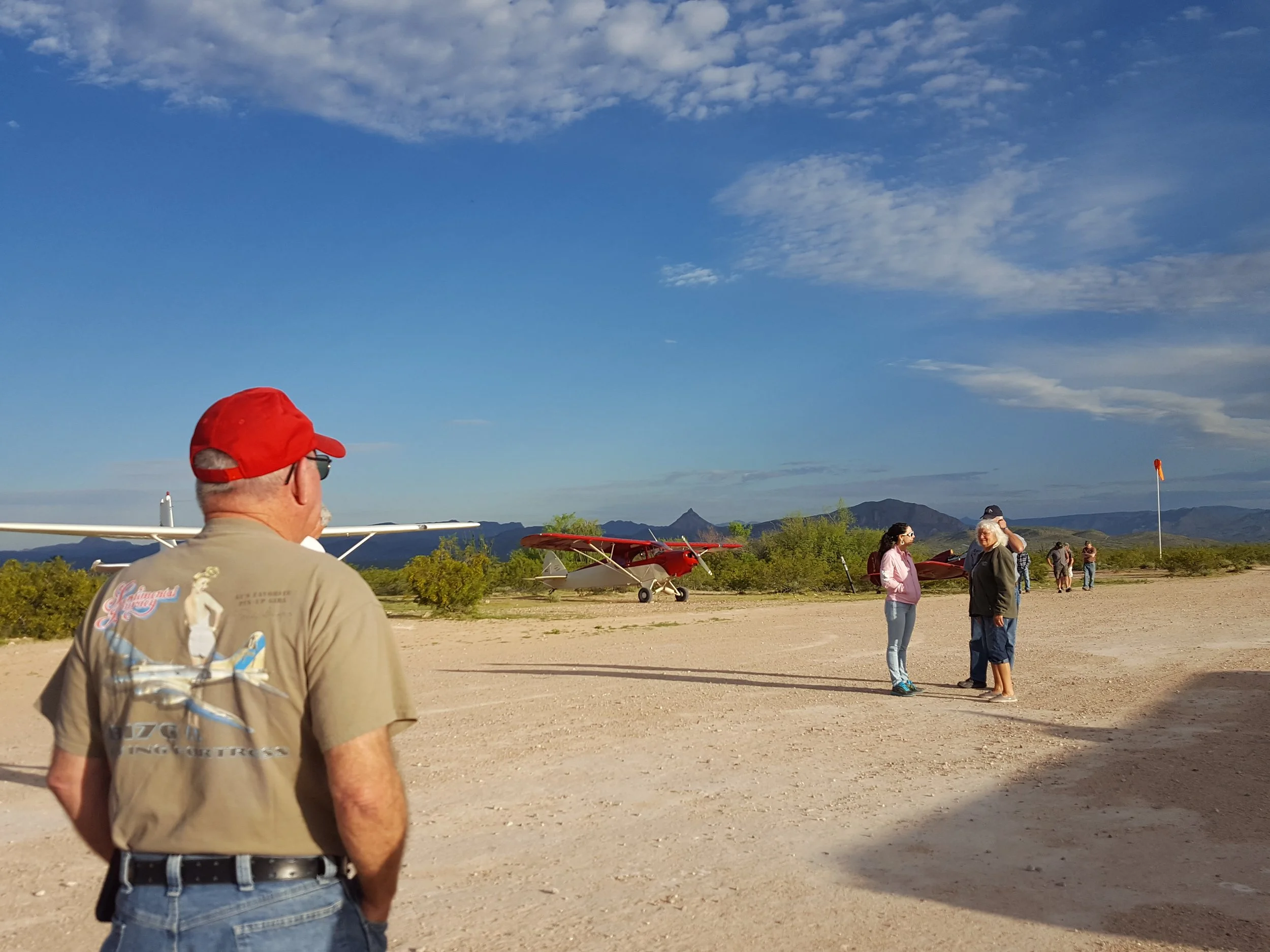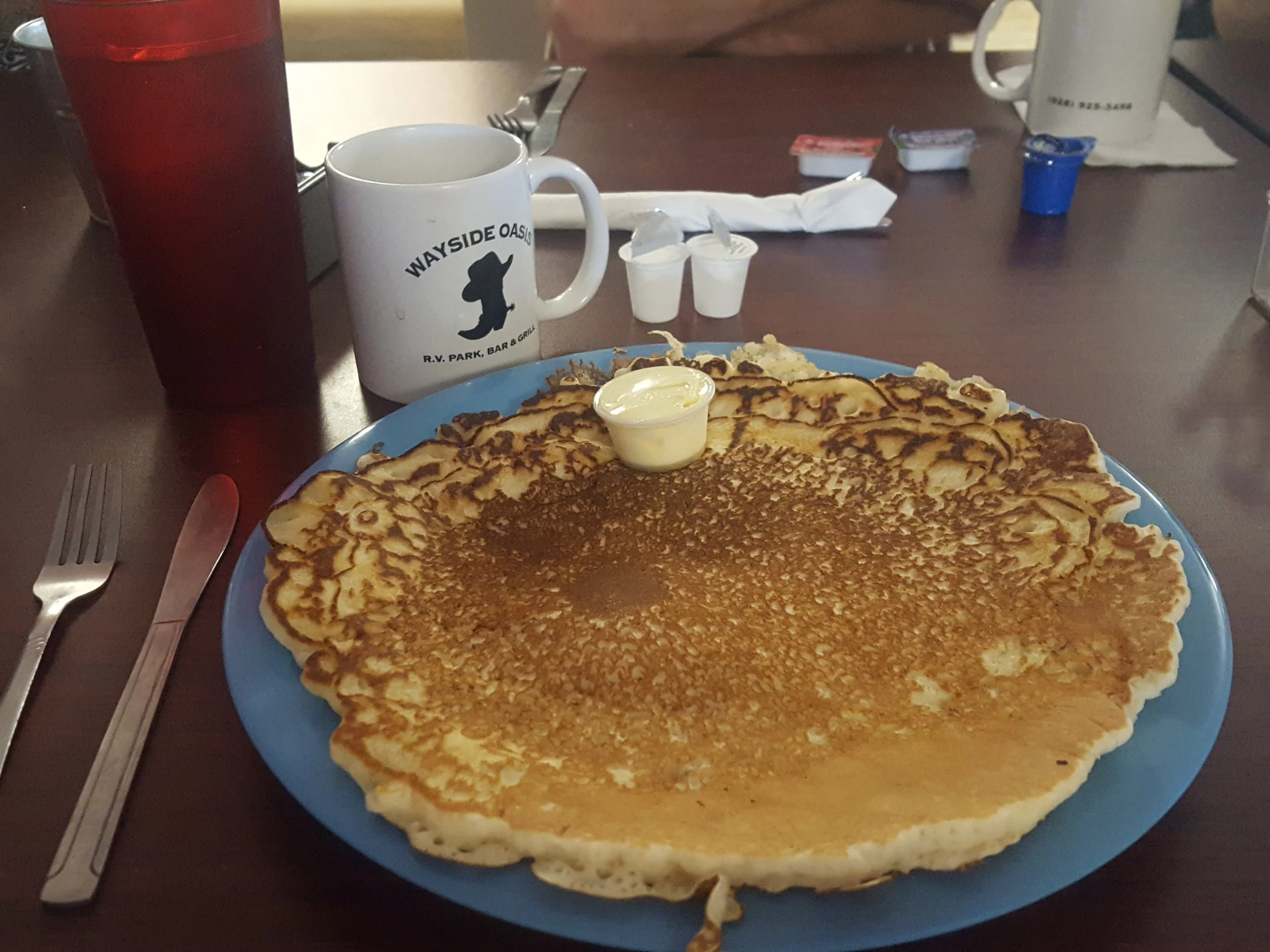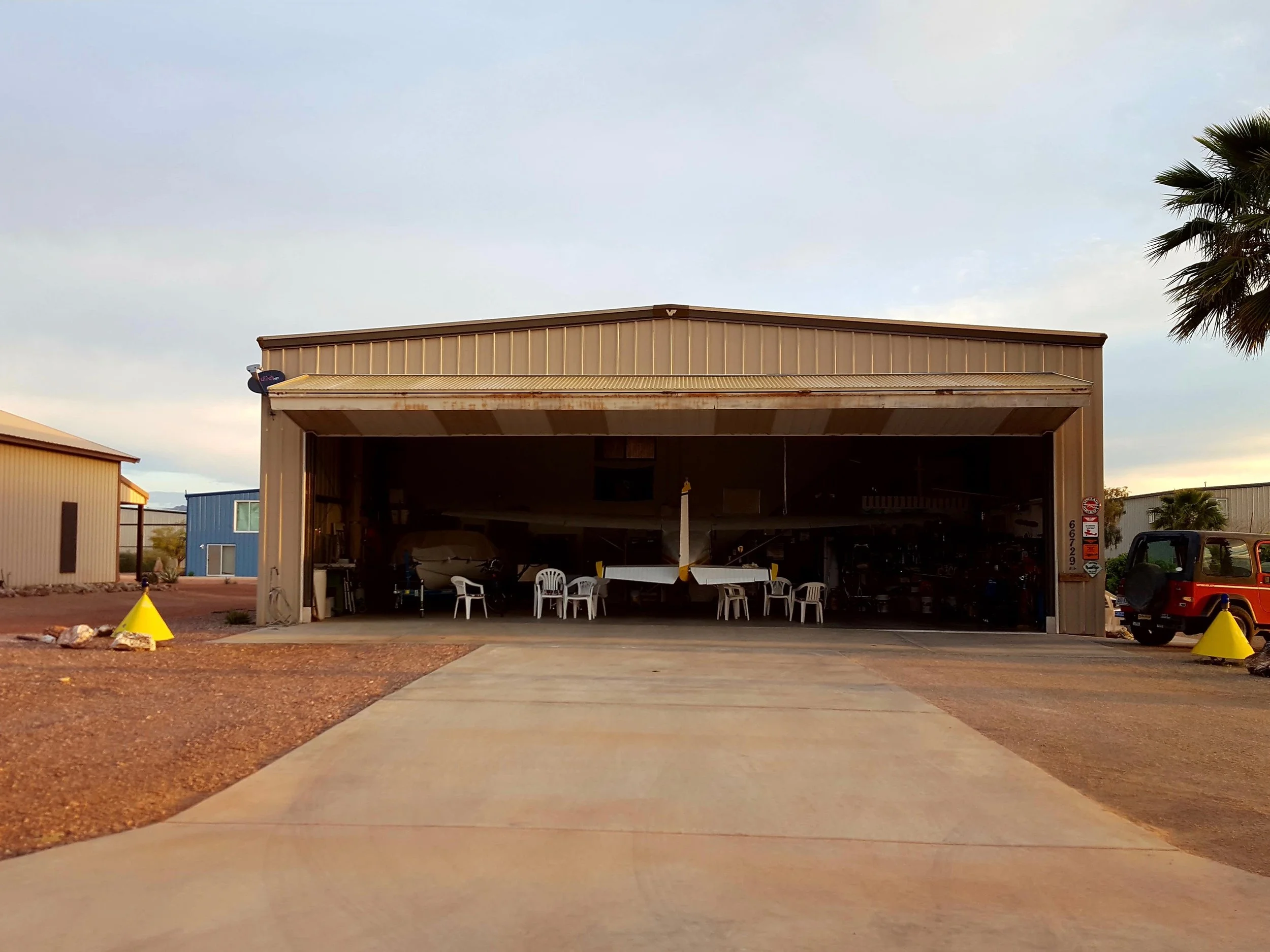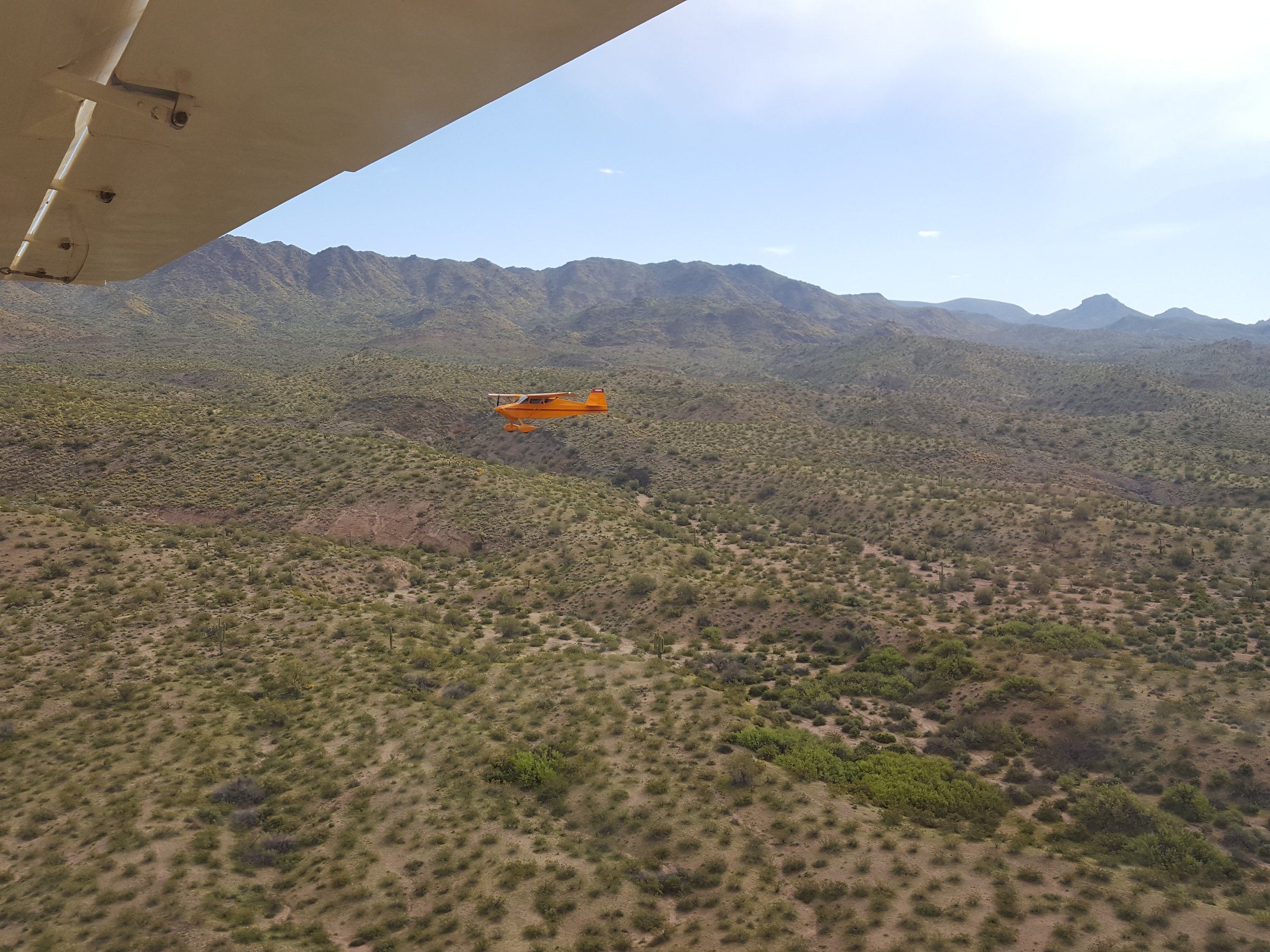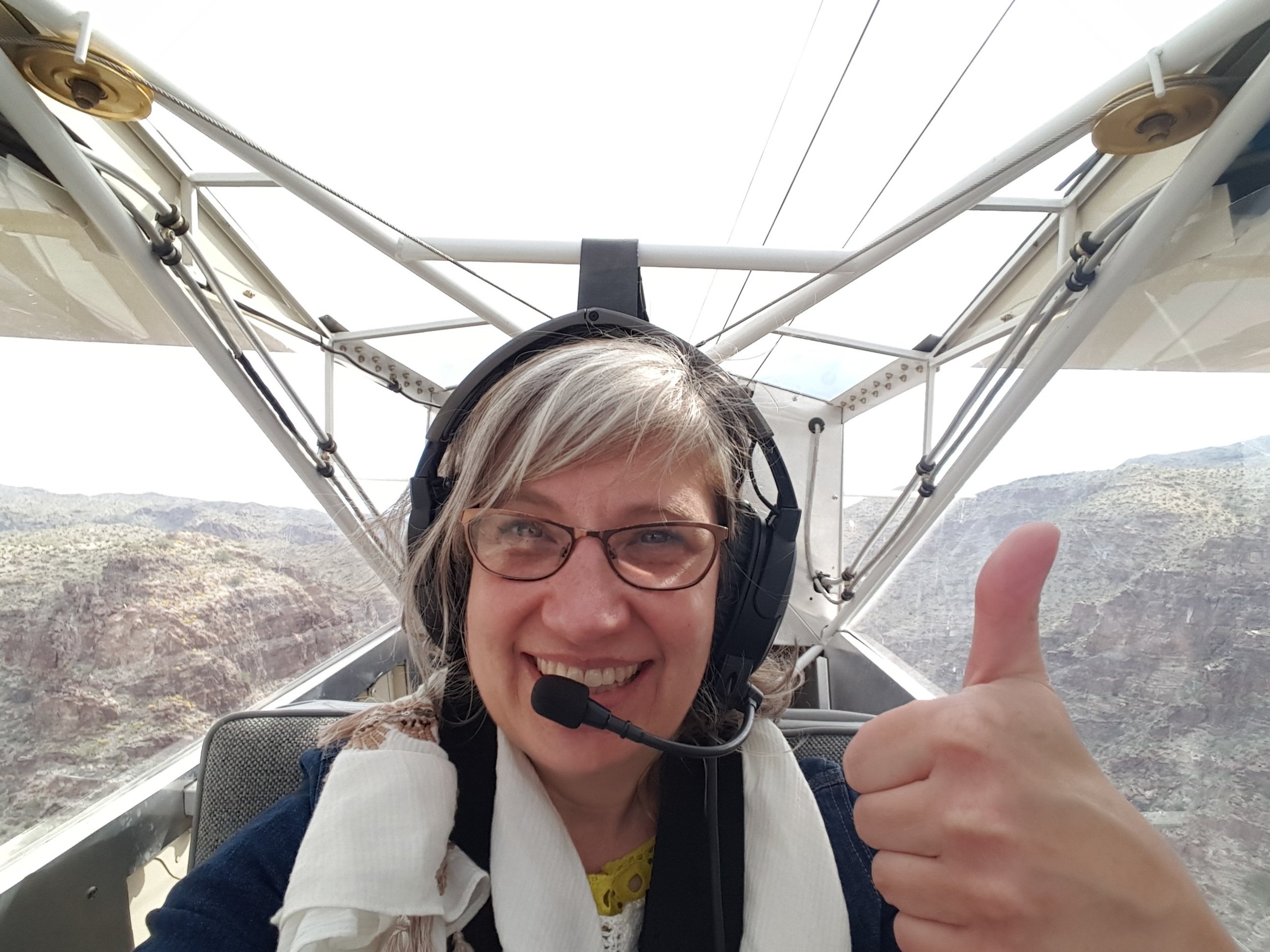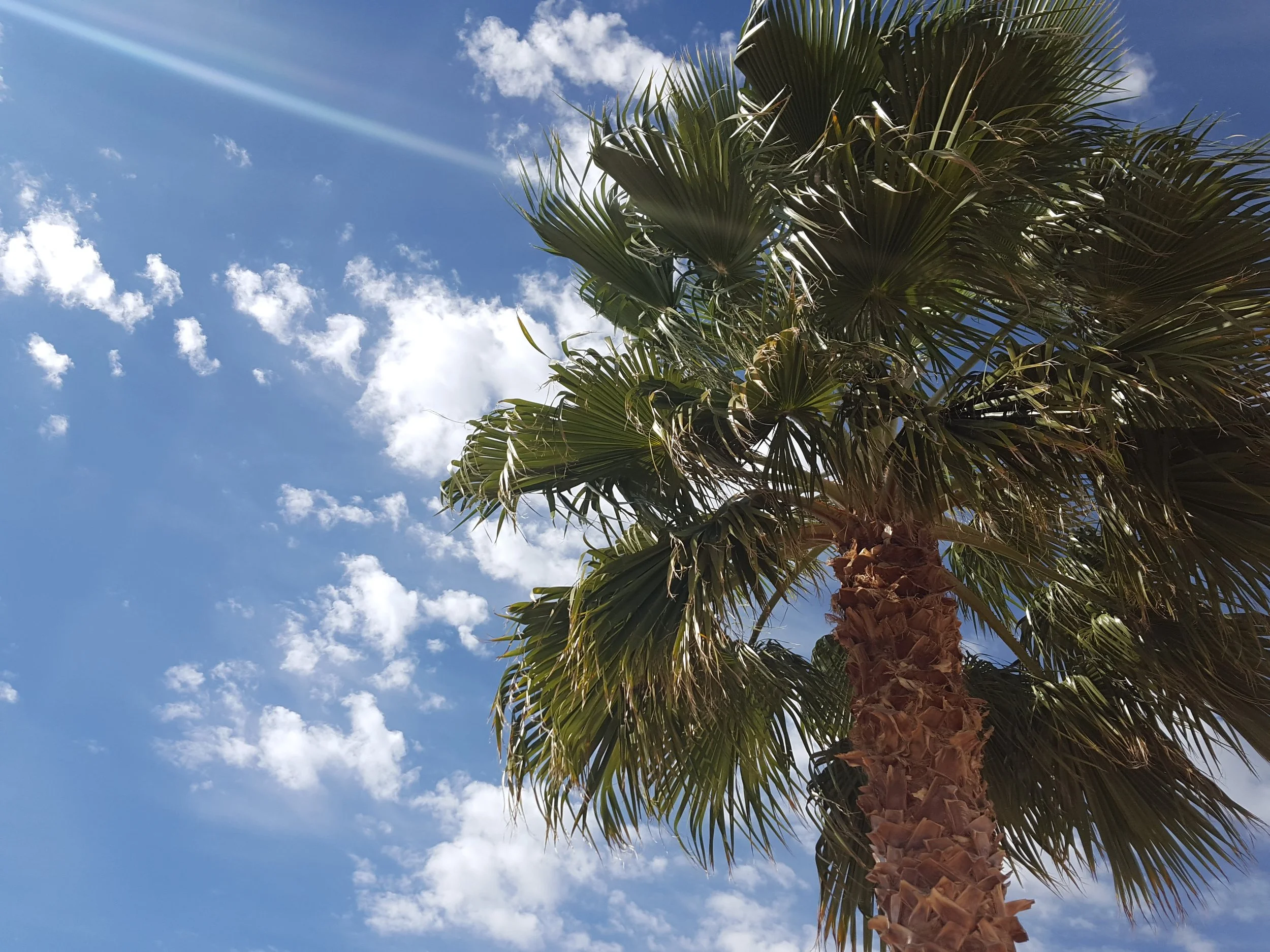Life on the runway
There is a place in the desert of Arizona where people live on runways instead of driveways. They have hangars instead of garages. They fly to breakfast not long after the sun rises and gather on plastic chairs in the shade, beer in hand, to talk about it all when the sun sets. It is an oasis for airplane lovers. I spent 48 hours with a group of flight-minded retirees living the dream in the Arizona desert.
It’s about 7 a.m. and the sun is still rising. The desert sky is pink and purple, the air is cool, and there is the buzz of small planes taking off, one after the other, little dots rising above the hangars. There is excitement in the air. It’s time for breakfast.
“That’s the other folks,” says pilot Mark Craven, motioning to the succession of planes buzzing and taking flight. “Should we push out?”
I’ve been invited to join for the near-daily trip to most popular breakfast spot around, a little place called the Wayside Inn that sits on a gravel airstrip and at the end of a long dirt road in Lake Alamo State Park, about an hour’s drive away. It will take us 20 minutes by plane.
There are two seats, one behind the other bobsled-style, and Craven instructs me how to step up into the plane. “Don’t hold on to the door. It’s not like a car.” He buckles me in to a harness with thick belts and metal hooks that clang as he fastens them.
“Where are the parachutes?” I ask.
“No parachutes today,” he says, assuring me what a champ the vintage plane is at landing on rough terrain in the desert.
Craven, a corporate pilot with 50 years of flying in his logbook, pushes his red and white Citabria (Read it backwards and it hints that it’s made for aerobatic tricks.) out of his hangar and onto the runway. The 44-year-old plane is an old friend. It was his father’s plane, and Craven flew his first hours in when he was a teenager. He grew up on a farm with an airstrip in Minnesota and has been flying since he was 16. He recently tracked it down and rebuilt it. It’s red now instead of orange, and completely flight ready. He swears.
“Airplanes are very heavily regulated for maintenance. Once a year they are torn down and very scrupulously inspected,” he says. “They don’t wear out, they just keep repairing them and keeping them up.”
He climbs in and starts the engine, and the propeller whirs. We adjust our headsets that deaden the thrum of the engine and allow us to talk to each other. Then he flicks a few switches overhead and we taxi down the street, waving at neighbors dragging their planes out of their hangars, hang a left for a short taxi to the ¼ mile long runway, and then…ready for take off, Craven announces in a crackly, faraway voice through the headphones.
The plane picks up speed as it crosses over gigantic white arrows on the asphalt and lifts off the tarmac effortlessly. We rise above the Sonoran Desert, the saguaro cacti and blooming sagebrush quickly shrinking below us.
We’re flying at about an hour at 2,500 feet, and we’ll be climbing to 3,200 feet to cross the mountain pass. Voices crackle through the headphones from the other pilots.
Are you still in the purple?
On the west side of Checkpoint Charlie.
You’re a dot out there about a mile and half behind you.
Butler Valley choppy.
Final to Wayside.
There is a place in the desert of Arizona where people live on runways instead of driveways. They have hangars instead of garages. They fly to breakfast not long after the sun rises and gather on plastic chairs in the shade, beer in hand, to talk about it all when the sun sets. It is an oasis for airplane lovers.
Most of the residents of Indian Hills Air Park in Salome, Arizona, about 90 miles west of Phoenix, flock here every November, fleeing cold, snowy places like Minnesota, Iowa, and Alaska for a warm, dry winter with near-perfect flying conditions. The nearest town has a three-way stop sign at the main intersection. The closest major grocery store is 60 miles away. And they love it.
The 80-feet-wide hangars line a blacktop runway that cuts through the neighborhood. There is a normal-size house attached the back of each one, so-called ‘hangar houses,’ that are dwarfed by what is essentially an eight-car garage filled with very expensive toys. Each property has a gravel yard that crunches underfoot and a palm tree or two that reaches toward the sun. Each hangar contains at least one plane, some kind of off-road vehicle for exploring the desert and nearby mountains, and a ring of chairs set up for daily happy hour, or “debriefing,” as the residents here call it.
There are a dozen people gathered on plastic chairs and folding camp chairs in her hangar. A giant plastic container of pretzels sits on an empty wooden electrical spool in the middle. Just about everyone has a beer in hand. There are no mosquitoes buzzing around, but it is wise to look out for rattlesnakes when the temperatures rise.
Someone rolls up in a Gator, an off-road vehicle that looks like something the Scooby Doo gang would pursue their mysteries in. There is the scraping of chairs on concrete as circle widens. The sound of another beer can opening echoes in the hangar.
There’s joking about the avoiding “burro exhaust” underfoot on recent hikes and climbing to the highest peak in southwestern Arizona in the Little Marquahala Mountains by 4x4 to find a perfect picnic spot. Tim brings over a plastic bucket filled with glassy black pebbles, Apache Tears, that he’s been gathering in a secret spot in the desert, thanks to an old map he found marking the spot of old mines in the area. Legend has it that they are the tears of the wives and children of Apache warriors who drove their horses off of a cliff rather than die at the hands of U.S. Calvary. The geologist in the group says they are black obsidian.
“We are a very diverse group of people here,” says Tim, an airplane mechanic and pilot who has been flying since he was 16 years old.
Of the 70 residents in the air park, there is a base jumper who has jumped off buildings around the world, a 90-year-old plumber who got married in 1943 (and still is), an aerobatic pilot (who recently flew a stunned visitor under power lines to show off), a man who made propellers for Navy ships, an engineer who worked on the Hubble telescope, a corporate pilot, farmers, and even two lady pilots, I’m told. They hail from Wisconsin, Canada, Minnesota, New York, Alaska.
They fly their planes to desert airstrips in other communities, restaurants, truck stops, air shows, and car shows. They call them “fly ins.” But they fly their planes to breakfast mostly. Quartzsite. Kingman. Alamo. Payson. Seligman. Preparations are underway for tomorrow. Phones buzz and ding with emails and messages.
So did you send out of the message?
No, I was going to confirm with Marion and Doug.
Marion wants to go. He is getting countertops on Wednesday.
Weather is supposed to go to pot the day after.
A couple of hours west of Phoenix, this desert community along State Highway 60 is quiet now, but the hills were once pockmarked with gold and silver mines, gypsum, manganese, copper, that brought fortune seekers in the 1800s. The famous sheriff Wyatt Earp retired just up the road. Or so legend says. In the 1920s, the main road was the only way to get to California from Phoenix and was lined with motels, restaurants, and gas stations. General Patton even trained his tank brigade on a secret base to the west.
“They call this the outback of Arizona, and to see it from the air is beautiful,” said Tim. “Especially those of us from the flat prairie lands of the Midwest.”
When we land on the desert airstrip at the Wayside Restaurant, the other pilots are already there, their planes lining the edge like greeters, everyone chatting on the edge of the runway as planes land with a buzz and a cloud of dust.
Good morning!
How was your flight?
How you doing, Rose?
The Indian Hills crew gets to the restaurant before it opens to be sure to beat the folks from the next closest runway community.
“If you get here late it can take an hour to get breakfast,” says Barb. “You might wait an hour to get your omelet, but it’s good.”
A waitress fill sturdy mugs emblazoned a black cowboy boot with black coffee. Photos of rattlesnakes, burros, and prize bass pulled out of Lake Alamo are pinned to a bulletin board on the wall. About a dozen of the pilot folk from Indian Hills are gathered four tables. Spoons clink in mugs as everyone jockeys to get their order in first.
“A good parallel for this lifestyle is people who retire and want to live on a golf course,” says Gerry Breyear, a retired engineer from Lockheed Martin, who has lived here part of the year with his wife Janet for some 20 years. He earned his flying license when he retired. “Well, our hobby and interest would be aviation, so we wanted to retire and live with our airplanes at an airport.”
Beware of that guy I warn you.
I think Barb needs to be first today.
What’s with that boy? Is he out of fuel?
So my buddy Phil…he’s coming next Sunday.
“I laid out map and looked for a place with no snow and a paved runway,” he said, adjusting his gold-rimmed glasses. He’s wearing a t-shirt emblazoned with an American flag, classic old cars, and the words “Wickenburg Fly-In.” He’s currently rebuilding a 1946 Luscombe plane and has a shiny red and white Studebaker that wins awards at local car shows. “We’re all 1/93rd owners of this airport. We manage this airport and our lifestyle and it’s what we want to be doing.”
Eggs over easy, sourdough.
What’re you having, Jim?
What? Ham??
Medium, scrambled, sausage.
He built it himself…
Those are my drinks
I like strawberry jam.
Well, I like grape jam.
Well, somebody has to…
There are cheers and laughing and teasing as the food comes out, one plate at a time.
“It’s a degree of freedom you can’t really express. You can fly like a bird,” said Breyear. “In high school I remember looking at the birds. In my high school yearbook I was noted for looking out the window and the airplanes and the birds. I’m living the dream. That’s what it’s all about. We all are.”

